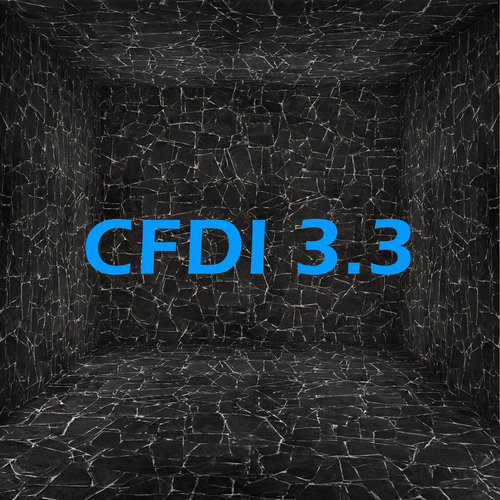I wrote this article as a way to vent my frustration about the CFDI 3.3 invoice, give my points of view as a https://www.osmoscloud.com/blog/wp-content/uploads/2022/09/header-cover-1.jpg (Business) and as part of the CFDI implementation team. This article is of a personal nature and unrelated to Osmos Cloud Inc. and Osmos Cloud SA de CV.
If you are not aware yet, on January 1, 2018, the new electronic invoicing in Mexico CFDI 3.3 came into force. Several months before, when the new version had been announced and after having known and understood the changes and new requirements, my frustration began.
I understand that no one likes change and there will always be a resistance. There are changes that are good and others that are not.
“I believe that the change to version 3.3 is far from being a good change for businesses, clients and the country. “
Why was the CFDI implemented in Mexico?
The main reason this electronic invoicing was implemented in Mexico and is being implemented in Latin American countries is because of tax evasion, fraud, improper use of invoices and SAT’s (Mexican tax agency) little control over printed invoices.
With the arrival of electronic invoicing, the SAT or the institution dedicated to collecting taxes can control and know who issues an invoice, to whom and all the transaction details. How? Without going into details, let’s say that the SAT virtually puts a stamp on each invoice you issue endorsing it. In addition, they know exactly who you are and who your client is.
“I think the idea and concept of electronic invoicing CFDI is great.”
It simplifies the administration of businesses, of the SAT, in addition to providing security and confidence in the transactions (up to this point everything is fine). It should be noted that version 3.2 wasn’t bad, it fulfilled its purpose and making invoices was even a simple process. A couple of additional steps to the previous versions (selecting payment method), but still, it wasn’t complicated.
OH NO! CFDI 3.3 arrived
The bad news is that version 3.3 (by definition it should have been called 4.0 due to ALL the changes it entails) is a version of CFDI that loses the initial focus (to simplify and control billing) turning the new billing process into a 100% bureaucratic process.
I believe that this new 3.3 version doesn’t modernize electronic invoicing and doesn’t make it simpler. The focus of tax collection is lost and making businesses go formal, should’ve been goal #1.
The world after CFDI 3.3
Imagine, now in the world of CFDI 3.3 to issue an invoice you have to:
- Include tax to EVERY concept of the invoice, it cannot be done globally. That’s right, if you’re going to bill 20 concepts, each one has to come identified with their own tax, even if it applies for everything. Example 16% VAT
- Now you have to identify each of the products or services that you sell and relate them to a catalog that the SAT provides. You have to deduct and select from within a catalog with more than 52,840 categories to which one corresponds to each concept of your invoice.
- As if selecting the category of the product and service wasn’t enough, now you also have to identify the type of unit based on a catalog created by the SAT. I thought that this wouldn’t be so complicated, but it’s even more complicated than selecting a product or service category. Now, for each concept you will have to select the type of unit within a catalog of 1,732 types of units. WOW! There are hundreds of them that I didn’t even know. It will be very interesting to see how businesses catalog all their products and services.
- You have to ask your client what they are going to use the CFDI and invoice for. This is not a joke, you have to indicate on your invoice what will be the use that your client is going to give it. At least here there aren’t as many options, only 21 so far.
- There are other changes such as selecting if the client will pay in installments or as a one-time payment or identifying with a postal code from where you are issuing the invoice, but these steps no longer make a difference.
Additionally, supposedly the receiver of the invoice will have to make sure that the categories, taxes and units for the concepts are accurate.
There’s still more for 2018…
In June of 2018 a new surprise awaits us: Cancelling a CFDI. This change was planned for January 1, 2018, but as the cancellation topic wasn’t well defined by the SAT it was postponed. What I do know is that they planned not allowing canceling bills the way it was done before.
The process they were proposing was to make the cancellation through a SAT portal (Tax Mailbox) where both, client and business must install an application on a computer and from there the business has to request the client’s approval for the cancellation of the bill. Imagine, the main cause of bill cancellation is due to lack of payment or errors in the bill. Now what the process suggests is that the business has to ask the customer for permission to cancel an invoice that they didn’t pay. If the client doesn’t give permission or does not answer because they don’t have the SAT application installed, you will not be able to cancel the invoice. If you want to know more you can read this article that I found: http://bit.ly/2FqsRav
Conclusion
Honestly, the CFDI 3.3 doesn’t help anyone. For businesses issuing an invoice will take centuries and mistakes. The client will now have the responsibility to audit invoices.
The SAT, although their objective is very clear and in theory sounds ideal, build a super database where they can have the information of what is sold, what is bought, from who, how, etc… It’s not a simple task and more than helping in the collection of taxes it will place an even bigger gap with the NON-taxpayer.
Governments should focus on how to make tax collection easier, standardize processes and make them as friendly as possible so there are no excuses for paying taxes.








